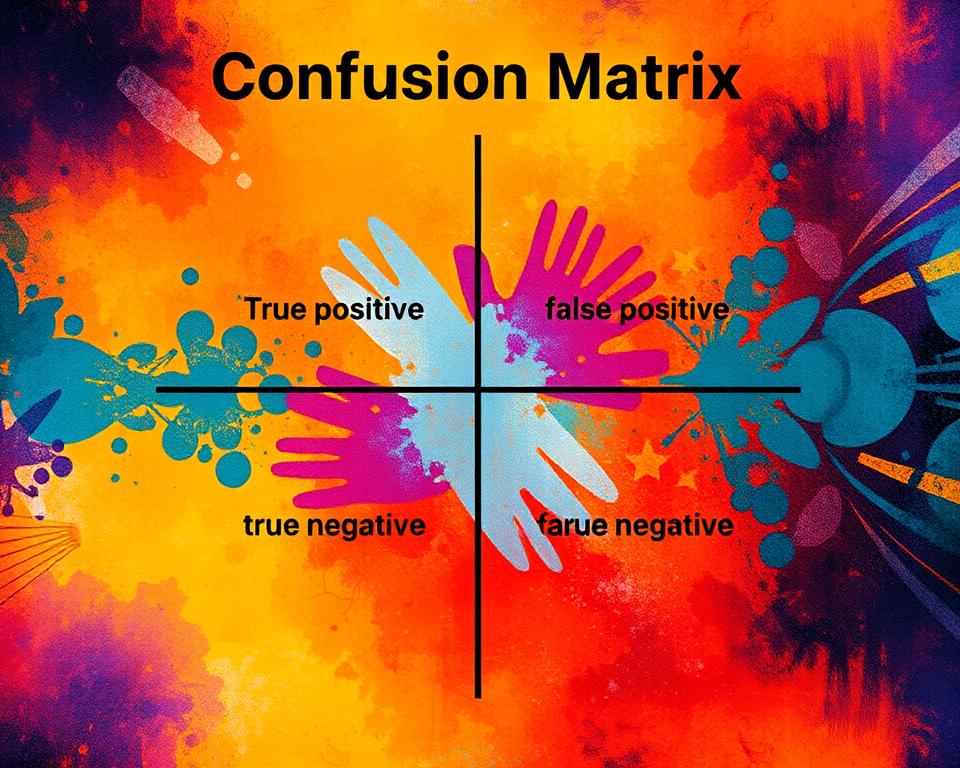Artificial intelligence (AI) and machine learning (ML) are changing the world fast. They’re opening up new chances for businesses and people. Whether you’re new to data science, just curious, or already experienced, making your own AI model is exciting. This guide will help you start from the basics to deploying and keeping your model.
Table of Contents
Key Takeaways
- Gain a solid understanding of the core concepts of artificial intelligence and machine learning
- Explore the different types of AI systems and how they can be applied to various use cases
- Learn about the essential prerequisites and tools needed to build an AI model
- Discover effective techniques for gathering, preparing, and preprocessing your dataset
- Master the process of selecting the right machine learning algorithm and training your AI model
- Understand how to evaluate, validate, and optimize your model’s performance
- Learn best practices for deploying and maintaining your AI solution in the real world
Understanding Artificial Intelligence Fundamentals
Artificial Intelligence (AI) is a field that’s growing fast. It’s exciting many people, from innovators to the public. AI uses advanced algorithms and neural networks to think like humans and do complex tasks. Knowing the basics of AI is key to understanding its power.
Types of AI Systems
AI systems fall into two main types: narrow AI and general AI. Narrow AI, or weak AI, is great at specific tasks like playing chess or diagnosing diseases. General AI, or strong AI, tries to be as smart as humans and do many tasks.
Machine Learning vs. Deep Learning
Machine learning and deep learning are important in AI. Machine learning uses data to make predictions and decisions. Deep learning, inspired by the brain, handles complex data with artificial neural networks.
Key AI Terminology
- Neural Networks: These mimic the brain’s neurons, helping AI learn and decide.
- Natural Language Processing (NLP): AI’s ability to understand and create human language.
- Machine Learning Algorithms: These statistical models let AI do tasks without being told how.
- Deep Learning Networks: These are complex neural networks that learn from lots of data.
Learning these basics will help you understand AI better. It prepares you to create smart systems that solve many problems.
Essential Prerequisites for Building AI Models
To build top-notch AI models, you need a strong base in programming, data science, computer science, math, and stats. Let’s explore what you need to get started.
First, knowing programming languages is key. Python is a top choice for AI and machine learning, thanks to libraries like TensorFlow and Keras. Other languages like R and Java are also important in AI.
Data science skills are vital for building AI models. You need to know how to work with data, from cleaning to analyzing it. Learning about data preprocessing, feature engineering, and model evaluation is crucial.
Understanding computer science basics is also important. This includes algorithms, data structures, and how to solve complex problems. Knowing about machine learning and deep learning helps too.
Math is the foundation of AI. You need to know linear algebra, calculus, and probability and statistics. These math skills help you understand and use AI algorithms.
By learning these basics, you’re ready to start building AI models. Remember, a strong foundation is the first step to AI mastery.
| Prerequisite | Importance |
|---|---|
| Programming Languages | Foundational for AI development, with Python, R, and Java being the primary choices. |
| Data Science Skills | Crucial for data manipulation, visualization, and analysis to extract insights from complex datasets. |
| Computer Science Basics | Equips you with problem-solving skills and understanding of algorithms, data structures, and computational complexity. |
| Mathematics | Provides the theoretical foundation for AI, including linear algebra, calculus, and probability and statistics. |
“Mastering the essential prerequisites is the key to unlocking your potential as an AI model builder.”
How to Build an AI Model
Starting an AI project is exciting and rewarding. But, it’s key to do it right from the start. We’ll cover the essential steps to build an AI model. This includes setting your project goals and setting up your development environment.
Defining Your AI Project Goals
The first step is to define your project goals clearly. Think about what problem you want to solve and what insights you aim to gain. Knowing your goals helps you pick the right AI framework and guides your development.
Take time to think about your project’s scope and what you hope to achieve. This will help you stay focused and ensure your model meets your needs.
Choosing the Right AI Framework
With your goals in mind, choose the right AI framework. TensorFlow, PyTorch, and Keras are popular choices. Each has its own strengths and uses.
Research each framework to see which fits your project best. The right framework can greatly impact your model’s success.
Setting Up Your Development Environment
Before starting, set up a good development environment. This means installing the necessary software and tools. You’ll need Python, your chosen AI framework, and other technologies.
Make sure your environment is set up right. This will help you plan and execute your AI project smoothly.
| AI Framework | Key Features | Ideal Use Cases |
|---|---|---|
| TensorFlow | Flexible, scalable, and highly customizable. | Complex deep learning models, large-scale projects, production deployment. |
| PyTorch | Intuitive, dynamic, and research-oriented. | Rapid prototyping, experimentation, research and development. |
| Keras | User-friendly, high-level API, easy to use. | Quick model building and deployment, beginner-friendly projects. |
By following these steps, you’re on your way to creating a successful AI model. It will meet your project’s specific needs and goals.
Gathering and Preparing Your Dataset
Creating a good AI model starts with the data you train it on. The steps of data collection and dataset creation are key. They set the stage for your AI project’s success. We’ll look at how to find quality data, check if it’s right, and get it ready for training.
Identifying Reliable Data Sources
Finding good data sources is the first step. You can use public datasets, industry-specific ones, or collect your own. Look at the data’s quality, accuracy, and if it fits your project.
- Check out trusted online data places like Kaggle, UCI Machine Learning Repository, or government open data sites.
- Look at the data quality by checking if it’s complete, consistent, and up-to-date.
- Make sure the data meets your data labeling needs and the problem you’re trying to solve.
Preparing and Preprocessing Your Data
After getting your data, you need to get it ready for training. This means cleaning, transforming, and organizing it. This makes sure your AI framework can use it well.
| Data Preprocessing Task | Description |
|---|---|
| Data Cleaning | Fix missing values, outliers, and data that doesn’t match. |
| Feature Engineering | Make new features or change old ones to help the model guess better. |
| Data Normalization | Make the data the same size so it works with your AI framework. |
By carefully picking and preparing your data, you’re ready to build AI models that work well. They’ll give you accurate and reliable results.
Data Preprocessing Techniques for AI Models
Getting your dataset ready for an AI model is key. It can really affect how well your model works. We’ll look at important data preprocessing techniques. These will make sure your data is clean and ready for training your model.
Data Cleaning Methods
Data cleaning finds and fixes errors in your dataset. This includes removing duplicates and fixing formatting. Having clean data is essential for making good AI models.
Feature Engineering Basics
Feature engineering creates new features from your data. This helps your model learn and predict better. Tasks like transforming variables and selecting key features are part of this. Good feature engineering boosts your model’s predictive power.
Data Normalization Strategies
Data normalization scales your data to a common range. This is crucial for AI models, as some algorithms need data in a specific scale. Techniques like min-max scaling and standardization are common. The right normalization can help your model perform better.
Learning these data preprocessing techniques is vital. It ensures your dataset is ready for AI model building. Remember, the quality of your data is crucial for your AI project’s success.
“Garbage in, garbage out. The quality of your data directly impacts the quality of your model’s predictions.”
Selecting the Right Machine Learning Algorithm
Choosing the right machine learning algorithm is key when building an AI model. The algorithm you pick depends on the learning approach needed for your project and your data’s characteristics. Let’s look at the three main types of machine learning and the algorithms they use. This will help you make a smart choice.
Supervised Learning Algorithms
Supervised learning algorithms work with labeled data. This means your dataset has both the input features and the desired output. They’re great for tasks like classification and regression. Some popular ones are Linear Regression, Logistic Regression, Decision Trees, and Support Vector Machines.
Unsupervised Learning Algorithms
Unsupervised learning algorithms are for unlabeled data. They help find patterns, clusters, or structures in the data. These algorithms are perfect for clustering tasks. Examples include K-Means Clustering, Hierarchical Clustering, and Principal Component Analysis.
Reinforcement Learning Algorithms
Reinforcement learning algorithms let an AI system learn by interacting with an environment. It makes decisions based on feedback or rewards. These algorithms are great for solving sequential decision-making problems. Some examples are Q-Learning, Deep Q-Network, and Policy Gradient Methods.
When picking a machine learning algorithm, think about the problem you’re trying to solve. Also, consider your dataset’s structure and size, and what you want from your model. Knowing the strengths and weaknesses of different algorithms helps you choose the best one for your project.
| Learning Approach | Characteristics | Suitable Algorithms |
|---|---|---|
| Supervised Learning | Labeled data, known inputs and outputs | Linear Regression, Logistic Regression, Decision Trees, Support Vector Machines |
| Unsupervised Learning | Unlabeled data, unknown patterns or structures | K-Means Clustering, Hierarchical Clustering, Principal Component Analysis |
| Reinforcement Learning | Interacting with an environment, learning through feedback | Q-Learning, Deep Q-Network, Policy Gradient Methods |
Training Your First AI Model
Creating a successful AI model needs careful planning. You must follow best practices and avoid common mistakes. Each step is important for your model’s success. We’ll explore the details of model training to help you confidently move forward.
Model Training Best Practices
Understanding hyperparameters is key to good model training. Choosing the right hyperparameters can greatly improve your model’s performance. Using GPU acceleration also speeds up training, helping you improve your model faster.
Avoiding Common Training Pitfalls
Model training can be tricky, with issues like data imbalances and vanishing gradients. Knowing these problems and how to solve them is essential. This knowledge will help you build a reliable AI system.
Resource Management Tips
Managing resources well is crucial in model training. This includes using your hardware efficiently and managing computer resources. These tips will help you train your AI model more effectively.
| Best Practice | Benefit |
|---|---|
| Hyperparameter Tuning | Optimizes model performance by finding the right balance between overfitting and underfitting. |
| GPU Acceleration | Significantly speeds up the model training process, enabling faster iteration and refinement. |
| Robust Data Handling | Ensures the model is trained on high-quality, representative data, preventing issues like data imbalance. |
“The key to successful AI model training lies in striking the right balance between art and science, combining technical mastery with a deep understanding of your data and business objectives.”
Model Evaluation and Validation Techniques
Evaluating and validating your AI model’s performance is crucial. By looking at model performance metrics, you can check if your model is accurate and reliable. Techniques like cross-validation and holdout validation are popular for this.
Cross-validation splits your data into parts for training and testing. This gives a better idea of your model’s strength. Holdout validation sets aside data for final testing, showing how well your model works in real life.
A/B testing compares two model versions to find the best one. The confusion matrix helps see how well your model predicts outcomes. It shows where you need to improve.
Using these methods helps create AI models that work well. Always check and improve your models to ensure they keep performing well.
Optimizing Your AI Model Performance
Getting the best out of your AI model is key to its success. We’ll look at three main ways to improve your model’s accuracy and speed. These are model optimization, hyperparameter optimization, and using cross-validation methods.
Hyperparameter Tuning
Hyperparameters are settings you can tweak to change how your model works. Methods like grid search and random search help you find the best settings for your model. Bayesian optimization is also a smart way to adjust these settings.
Cross-Validation Methods
Cross-validation is vital to make sure your model works well on new data. It trains and tests your model on different parts of your data. This helps you see how well it really performs. You can use k-fold, leave-one-out, or stratified cross-validation.
Performance Metrics Analysis
Looking at your model’s performance metrics gives you important insights. Metrics like accuracy, precision, recall, and F1-score show how well your model does. Understanding these can help you improve your model and make better choices.
| Metric | Description | Interpretation |
|---|---|---|
| Accuracy | The ratio of correct predictions to total predictions | A high accuracy means your model is doing well overall |
| Precision | The ratio of true positive predictions to total positive predictions | High precision means fewer false positives |
| Recall | The ratio of true positive predictions to all actual positive instances | High recall means your model finds most positives |
| F1-Score | The harmonic mean of precision and recall | A high F1-score means a good balance between precision and recall |
By using these methods, you can make your AI model perform at its best. This ensures it meets your specific needs.
Debugging Common AI Model Issues
Building AI models is a journey, and even experts face hurdles. Model debugging, error analysis, and bias detection are key skills. We’ll look at ways to tackle common problems that can slow down your AI models.
Overfitting is a big issue, where models do great on training data but fail on new data. Using techniques like regularization and dropout can help. These methods reduce overfitting and make models more versatile.
Underfitting happens when models are too simple. Here, making models more complex is key. This lets them catch the data’s patterns better.
Bias detection is another big challenge. Models might show unfair biases based on gender, race, or more. Using error analysis can find these biases. Then, you can fix them by adjusting data or algorithms.
Learning these debugging skills can make your AI models better. They’ll be accurate, fair, and reliable in real-world use.
| Common AI Model Issues | Strategies for Debugging |
|---|---|
| Overfitting | Variance reduction techniques (regularization, dropout) |
| Underfitting | Model interpretability, increasing model complexity |
| Bias detection | Error analysis, data preprocessing, algorithmic adjustments |
“Debugging AI models is an essential skill for any data scientist. It’s the difference between building models that work in the real world and those that only perform well on paper.”
Deploying Your AI Model
When you finish making your AI model, it’s time to use it in the real world. Deploying an AI model needs careful planning. You must think about cloud computing, how to integrate it, and how to scale it. Let’s look at the main parts of AI model deployment for a smooth and effective setup.
Cloud Deployment Options
Choosing where to host your AI model is a big decision. Cloud computing platforms are flexible and grow with your needs. You have many options to pick from.
- Platform-as-a-Service (PaaS) solutions like AWS Sagemaker, Google Cloud AI Platform, and Microsoft Azure Machine Learning manage the setup for you.
- Container-based deployment with Docker and Kubernetes lets you move and scale your model easily.
- Serverless deployment with AWS Lambda and Google Cloud Functions lets you focus on your model without worrying about the setup.
Integration Strategies
After picking your deployment method, you need to connect your AI model with other systems. You might need to create APIs or use event-driven architectures to make predictions based on data.
Scaling Considerations
As your AI solution gets more popular, it must handle more users. You’ll need to think about horizontal scalability, load balancing, and autoscaling to keep it running smoothly.
By understanding deployment options, integration, and scaling, you can move your AI model from development to a working, scalable, and user-friendly application.
Maintaining and Updating Your AI Model
Starting your AI model journey means focusing on model maintenance and updates. Your AI model needs regular care to stay reliable and perform well. This part covers how to monitor model performance, handle concept drift, and use retraining strategies to keep it top-notch.
Keeping an eye on your model’s performance is key. Watch its accuracy, precision, and recall to spot any drops or concept drift. This way, you can fix problems fast and keep your AI apps reliable.
- Implement robust model monitoring practices to track performance metrics and detect concept drift.
- Develop retraining strategies to keep your model up-to-date with evolving data and user requirements.
- Leverage version control systems to manage model iterations and facilitate seamless model updates.
Keeping your AI model in top shape also means having good retraining strategies. As data and needs change, your model must adapt. This might mean adding new data, tweaking settings, or even starting over. By actively managing updates, your AI stays ahead in your field.
Success with AI models comes from a complete approach to model maintenance, version control, and retraining strategies. Stay alert and adjust to your model’s changing needs. This way, your AI solutions will keep delivering great value to everyone involved.
Real-World Applications and Use Cases
AI is changing many fields, making things better and solving big problems. It’s used in healthcare, finance, and more. Let’s look at some ways AI is making a big difference.
Industry-Specific Examples
In healthcare, AI helps doctors find diseases early and accurately. It looks at lots of data to spot things humans might miss. This leads to better treatments for each person.
In finance, AI helps manage risks and find fraud. It uses big data to make smart choices. This makes money management better and cuts down on fraud losses.
Success Stories
Amazon’s AI is a great example. It uses machine learning to suggest products. This boosts sales by giving customers what they might like. It makes shopping better and increases sales.
Farmers are also using AI. They use sensors and drones to check on crops and plan better. This makes farming more efficient and sustainable.
| Industry | AI Application | Benefits |
|---|---|---|
| Healthcare | Diagnostic AI systems | Early disease detection, personalized treatment |
| Finance | Risk management and fraud detection | Improved compliance, reduced losses |
| E-commerce | Recommendation engines | Increased sales, enhanced customer experience |
| Agriculture | Smart farming with AI-powered sensors | Optimized resource allocation, higher crop yields |
These examples show how AI is changing industries. It’s leading to big improvements and success stories. As AI gets better, we’ll see even more changes in how we live and work.
“AI is not just a technology, it’s a strategic enabler that can unlock new opportunities and drive transformative change across industries.”
Best Practices and Common Mistakes to Avoid
Creating successful AI models needs a deep understanding of the best practices and common pitfalls. Experts say it’s important to focus on ethical AI, good project management, and a data-driven approach. Avoiding mistakes like poor data quality, ignoring bias, or lacking model clarity helps you succeed in AI development.
Building AI models requires careful planning and execution. Experts suggest setting clear goals, choosing the right AI frameworks, and keeping a structured development environment. It’s also key to master data preprocessing, pick the right algorithms, and test models thoroughly.
Keeping your AI systems updated is crucial for long-term success. Leaders stress the need to debug, optimize, and deploy AI models smoothly. By following these best practices and learning from others, you can fully benefit from AI and deliver impactful solutions.



















